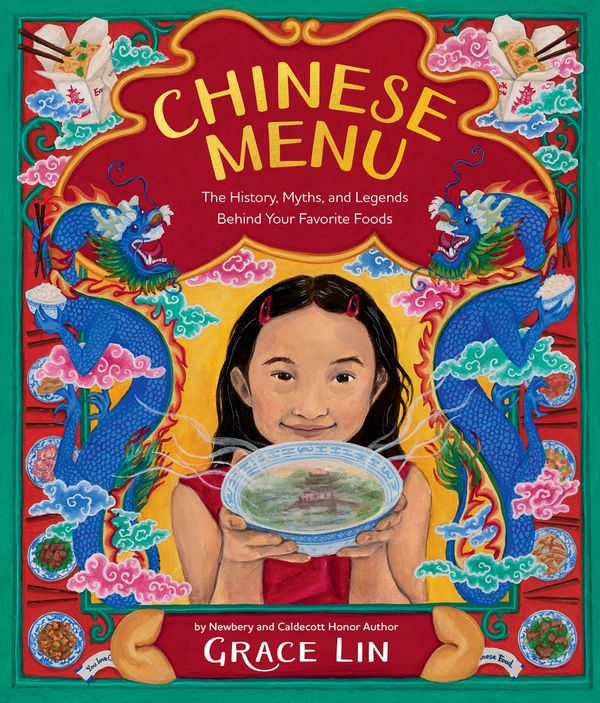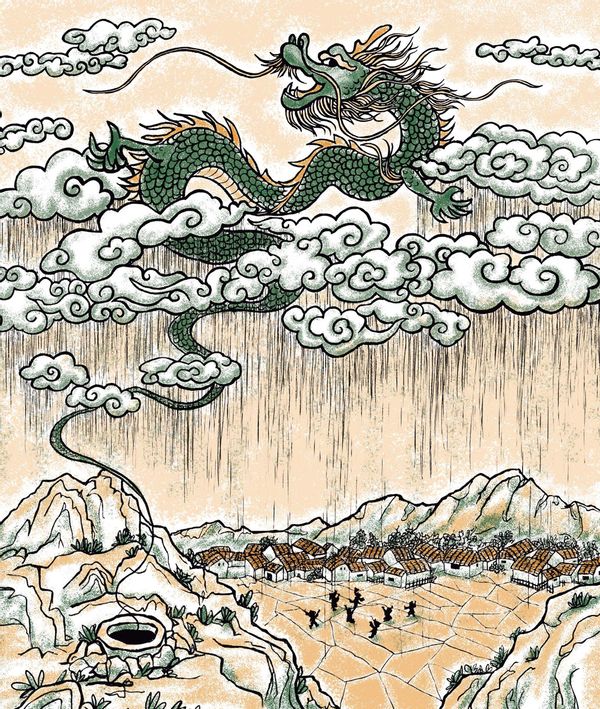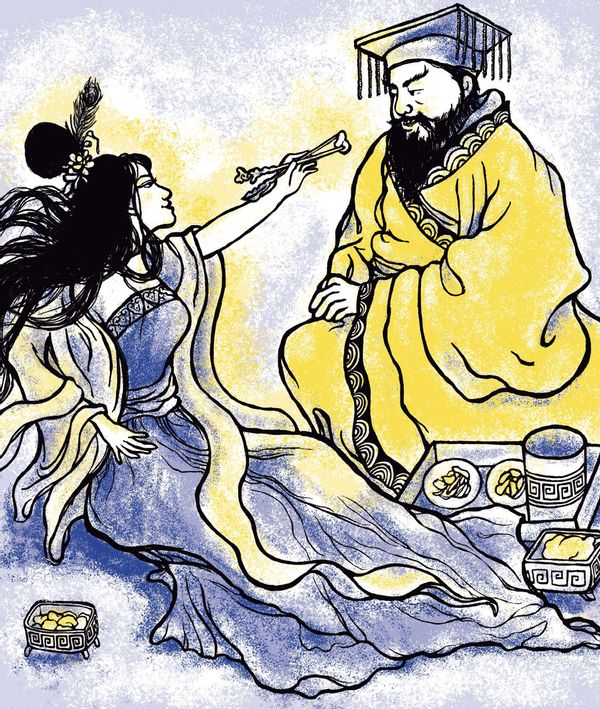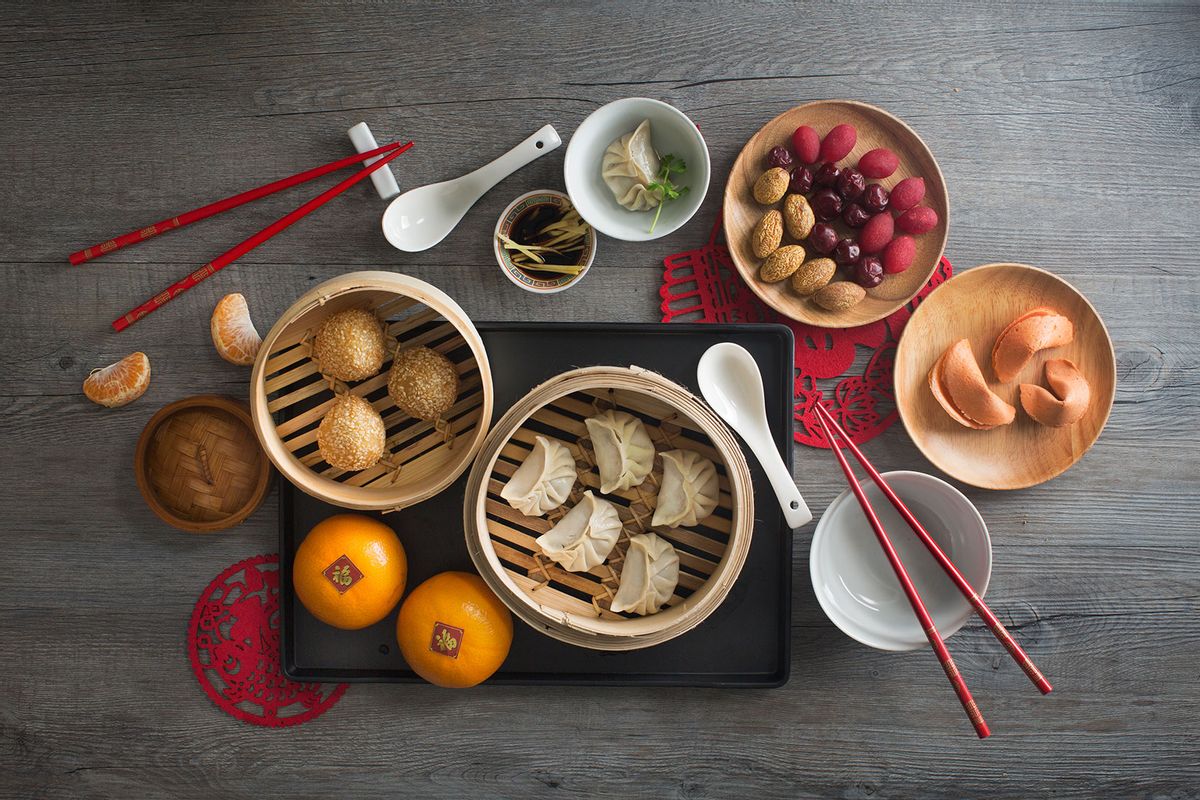The seed of inspiration for author Grace Lin’s ninth and newest children’s book was actually planted almost 20 years ago, right after the release of her 2004 book “Fortune Cookie Fortunes.” She found that in so many cases, when speaking about fortune cookies, people would say, “Oh, fortune cookies aren’t really Chinese . . . with some sort of disdain or disgust. Lin added “as an American-born Asian person who has struggled with her identity . . . I could easily see the same words about me.”
So, Lin took it upon herself to “show this kind of food some respect,” though she says that it took her many years to ultimately put this book together because she needed to find self-acceptance in her own identity before she could make it.
“Because just like being an Asian American, Asian American food is not something to be ashamed of or to scorn,” Lin said. “Yes, every Chinese dish served in an American restaurant has been adapted and changed. Yes, most do not have the flavors of traditional Chinese cuisine and are unlike what you would find in China. But American Chinese cuisine is the flavor of resilience, the flavor of adaptability, the flavor of persistence and triumph. Above anything, this food is the flavor of America. So, I hope the book gives people a new respect for this part of our culture — or, at the very least, I hope it makes eating Chinese food more enjoyable!”
The result is “Chinese Menu: The History, Myths, and Legends Behind Your Favorite Foods,” which explores the folklore behind your favorite Chinese dishes — and is a magnificent book to read through as a way to celebrate the upcoming Lunar New Year on Feb. 10.
 Chinese Menu by Grace Lin cover (Photo courtesy of Little, Brown Books)
Chinese Menu by Grace Lin cover (Photo courtesy of Little, Brown Books)
To compile “Chinese Menu,” Lin worked with Izabelle Brande, a research assistant, in order to ensure that some of the lore and stories she's heard over the years —especially ones linked with particular dishes, recipes or ingredients — were as factually-based as can be. "With her help, I was able to obtain and read secondary sources for the stories I had so I could verify what was accurate about them,” she said. “She also found a lot of stories that I didn't know about, so she was invaluable. I know that the book would not have the quality it does without her help.”
Want more great food writing and recipes? Subscribe to Salon Food's newsletter, The Bite.
Lin's favorite story in the book is the tale about White Hair Silver Needle tea, "which involves an evil dragon and an Ingenious girl who outwits the dragon to collect the tea needed to save her village. The reason I love it is because I can remember how enthralled my daughter was when I read the story to her.”
 Dragon Well Tea, illustration from Chinese Menu by Grace Lin (Photo courtesy of Little, Brown Books)
Dragon Well Tea, illustration from Chinese Menu by Grace Lin (Photo courtesy of Little, Brown Books)
One particular tale from “Chinese Menu” tells of how dumplings once apparently cured a village’s frostbitten ears. When I asked for clarification, Lin said that dumplings were actually invented by an ancient Chinese doctor named Zongjin, who “made the dumplings with warming herbs and peppers” and “he made his dumplings ear-shaped to help them remember what the medicine was for.”
Of course, it's unclear if this worked as originally intended. “But people couldn't stop eating them,” Lin said. “And now, we still eat them!"
 Author Grace Lin (Photo courtesy of Danielle Tait)
Author Grace Lin (Photo courtesy of Danielle Tait)
Working through the research for this book also helped Lin parse through stories she had been told as a child and assess which were actually grounded in truth. This also speaks to the way in which the line between factual and fictional gradually blurs as the years go by, in everything from the details of family histories to the histories of beloved foods For instance, she grew up thinking that Marco Polo ate scallion pancakes in China, loved them and then, upon arriving back in Italy, tried to get chefs to make them for him — who inadvertently invented pizza.
We need your help to stay independent
"I discovered that [this story] is just a made-up myth,” Lin said. "The first printed version I could find . . . is a parody in a Chinese newspaper."
When speaking about the link between Chinese food and Chinese-American food, Lin says that "This food is something unique to the United States but has roots, a history and a tradition in China." She adores her mom's scallion pancake recipe (which is included in the book!), but noted that "the food my mother served at home and the food that was served at our local Chinese restaurant was not that similar" — except for the scallion pancakes. On special occasions, Lin's family would also celebrate at a Chinese restaurant, though, so foods like Mu Shu Pork and Kung Pao Chicken are "celebration food, delicious and special" for Lin. "Even though I eat from Chinese restaurants fairly regularly now, I still have that feeling that this is food of joy."
 Daji Invents Chopsticks, illustration from Chinese Menu by Grace Lin (Photo courtesy of Little, Brown Books)
Daji Invents Chopsticks, illustration from Chinese Menu by Grace Lin (Photo courtesy of Little, Brown Books)
With "Chinese Menu," Lin wanted to present Asian folktales with "respect and appreciation . . . not from the stance of 'isn't this story weird?', [but instead] the attitude of 'isn't this story so marvelous?’”
According to Lin, when she began working in the publishing industry in 1999, there was a dearth of children’s books centered on Asian American and Pacific Islander (AAPI) heritage, and those that did exist were difficult to find or sometimes included “cringeworthy stereotypes, or — just as bad — portrayed Asian culture incorrectly." It’s taken the work of many children's authors, including Laurence Yep, Linda Sue Park and Lisa Yee, to change some of those perceptions. Through “Chinese Menu,” Lin hopes to build upon their work and “show the common humanity that Asian characters have with readers.”
“And what better way to do that than with food?” Lin asked.
Read more
about this topic



Shares